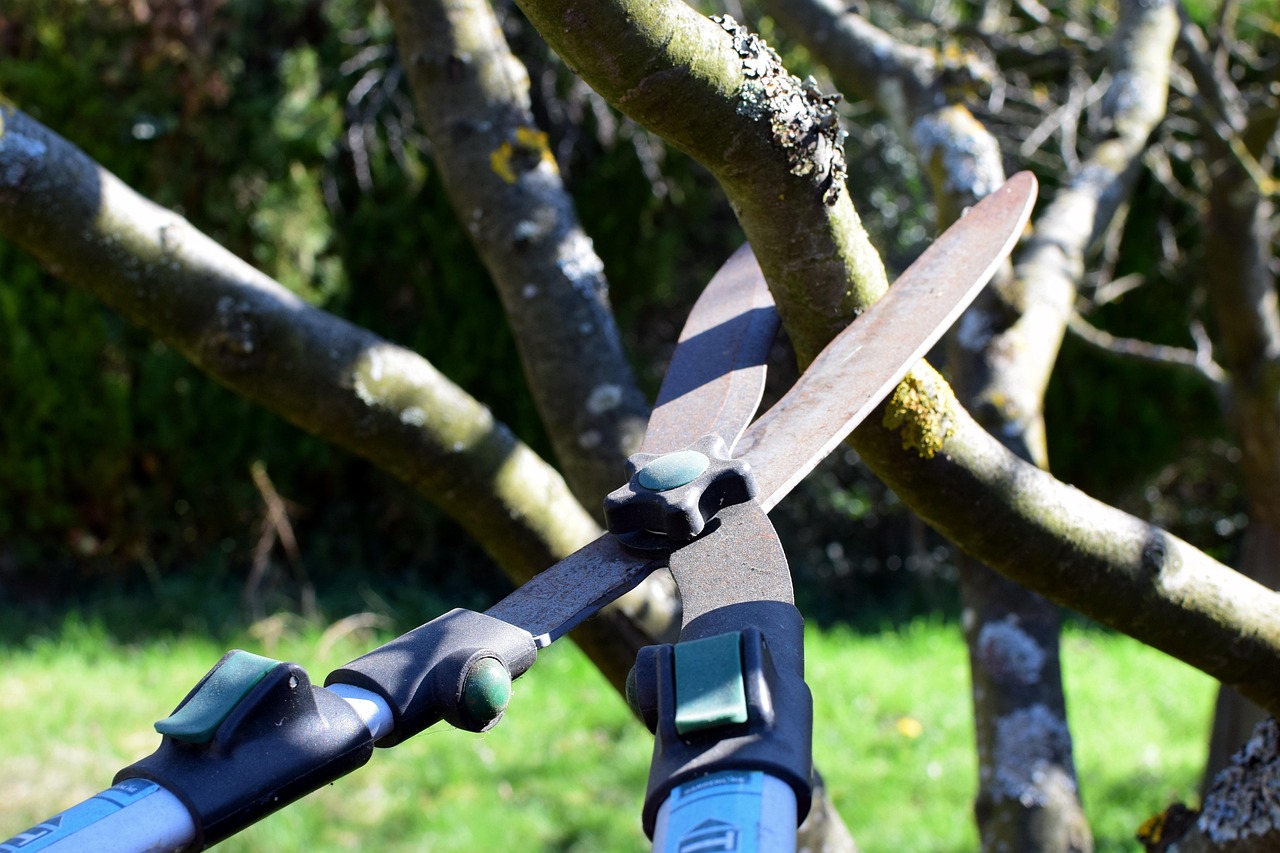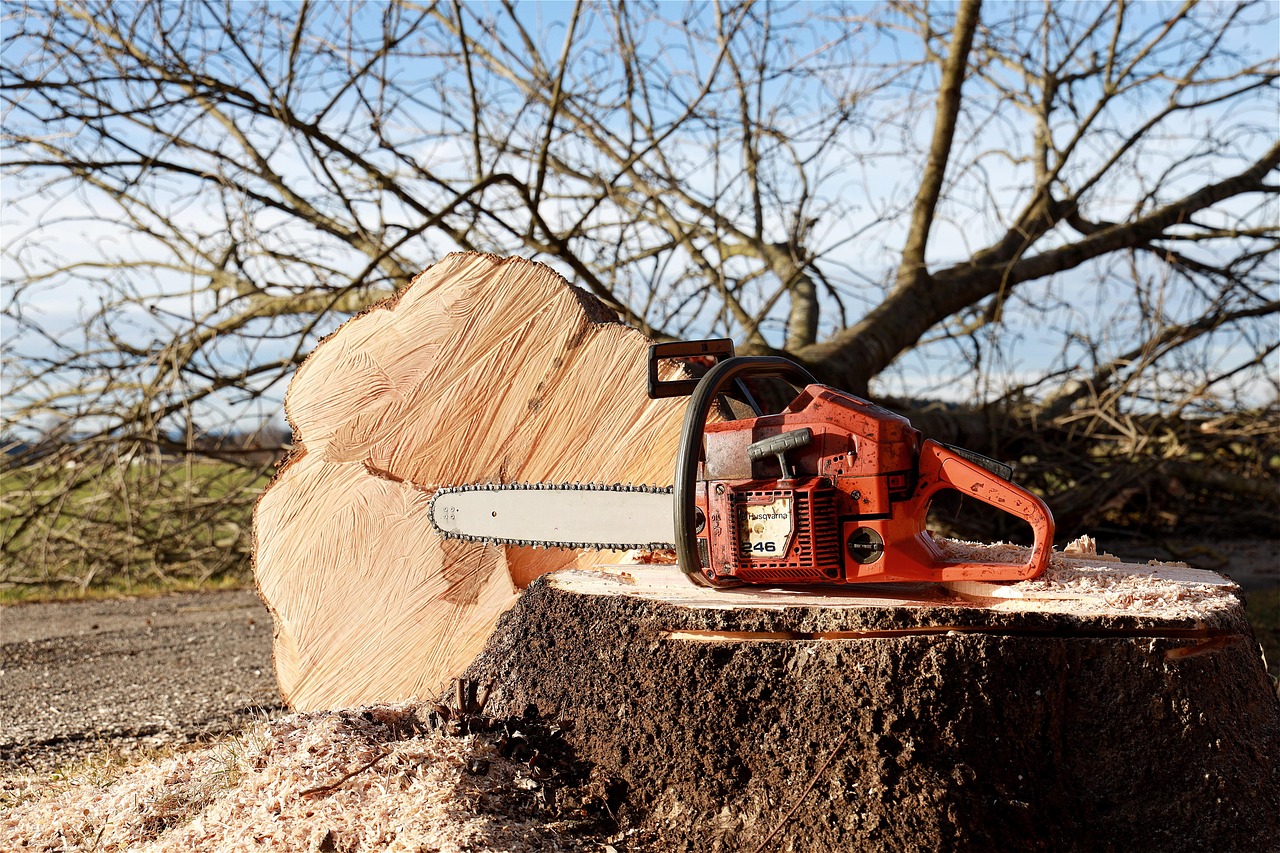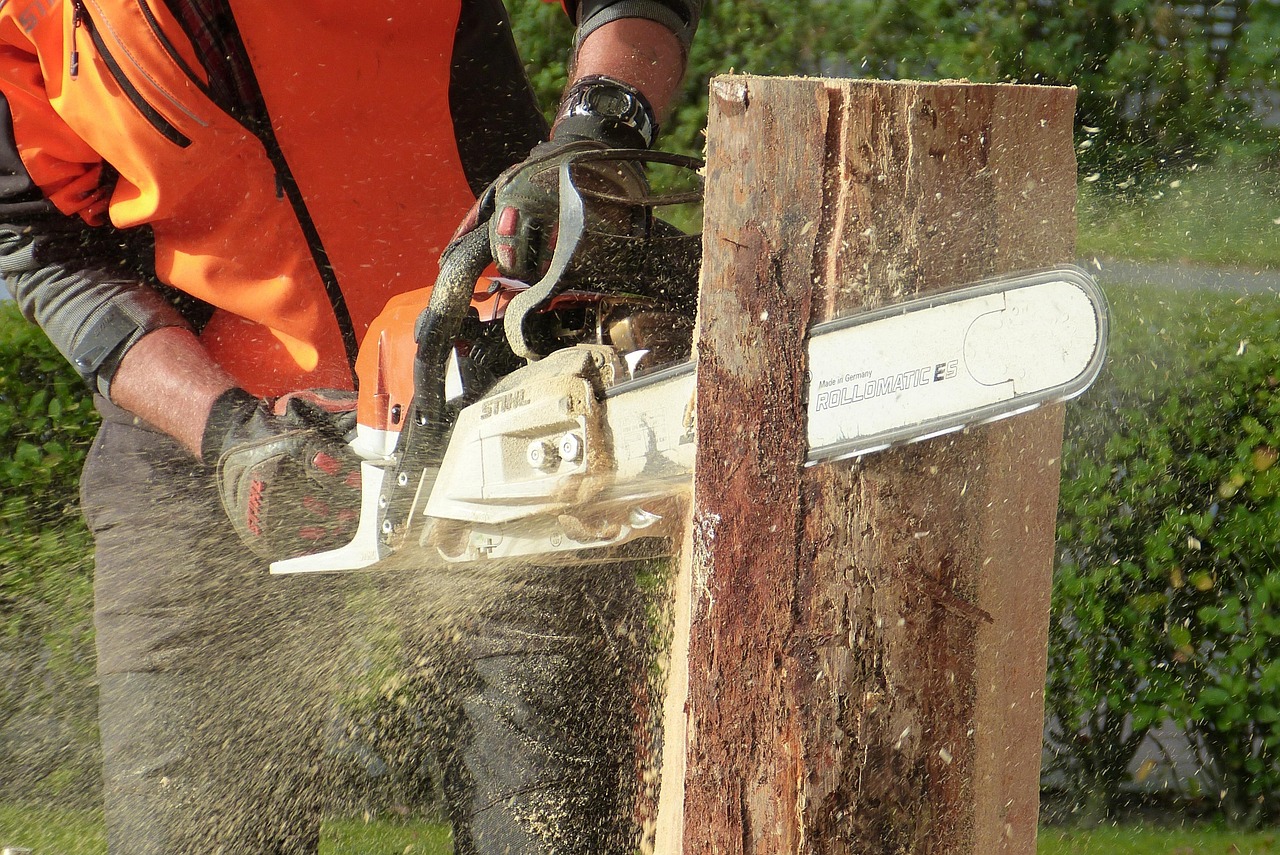Tree pruning is essential for promoting healthy growth and maintaining the overall appearance of trees. Proper pruning techniques can enhance sunlight penetration, improve air circulation, and encourage stronger branch structure, ultimately leading to healthier trees.
Understanding tree pruning is crucial for anyone who wants to maintain a beautiful landscape. Trees require regular care to thrive. Pruning is the process of selectively removing specific parts of a tree, such as branches, buds, or roots. This practice not only helps shape the tree but also contributes to its health and longevity.

There are several reasons why pruning is necessary. First, it removes dead or diseased branches, reducing the risk of infection. Second, it helps in shaping the tree, promoting a more aesthetically pleasing form. Third, it encourages new growth by allowing more light to reach the inner parts of the tree.
Types of Pruning
Pruning can be categorized into several types based on the desired outcome. Each type serves a specific purpose and can have different impacts on tree health and growth.
- Thinning: This method involves removing selected branches to increase light penetration and airflow through the tree’s crown.
- Reduction: This technique reduces the overall size of the tree while maintaining its natural shape. It is often used to keep trees from growing too large.
- Raising: This type of pruning removes lower branches to provide clearance for vehicles, pedestrians, and structures.
- Cleaning: This involves removing dead, diseased, or broken branches to improve the tree’s appearance and health.
Each of these methods plays a vital role in maintaining the structure and health of a tree. Knowing when and how to apply these techniques is essential for effective tree care.

Tools for Pruning
Having the right tools is key to successful pruning. Here are some commonly used tools along with their purposes:
| Tool | Purpose |
|---|---|
| Pruning Shears | Used for cutting small branches and stems, ideal for precision work. |
| Loppers | Larger than shears, loppers are designed for cutting thicker branches up to 1.5 inches in diameter. |
| Saw | A handsaw or chainsaw is necessary for larger branches that cannot be handled by shears or loppers. |
| Gloves | Protect hands from cuts and scrapes during pruning. |
Using the appropriate tools ensures clean cuts, which help prevent damage to the tree. Dull tools can crush branches rather than cut them cleanly, which can lead to disease and decay.
When to Prune
The timing of pruning is just as important as the technique itself. Different species of trees have specific times when they should be pruned to minimize stress and promote healthy growth. Generally, it is recommended to prune during late winter or early spring before new growth begins. This timing allows trees to heal quickly and encourages vigorous growth during the growing season.

However, some trees may benefit from summer pruning. This technique can help control tree size and improve air circulation among leaves. It’s also essential to avoid pruning during the fall, as this can encourage disease and insect infestations.
Effects of Improper Pruning
Improper pruning can have damaging effects on trees. Common mistakes include:
- Over-pruning: Removing too much foliage can stress the tree, leading to stunted growth or even death.
- Making improper cuts: Inadequate cuts can create wounds that invite pests and diseases.
- Ignoring tree species needs: Not all trees require the same type of care; failing to consider specific species needs can result in poor health.
Awareness of these potential pitfalls will help ensure that your pruning efforts are beneficial rather than harmful.

In conclusion, mastering the basics of tree pruning is essential for anyone looking to maintain healthy trees. From understanding different types of pruning to using the right tools at the right time, each aspect plays a crucial role in ensuring the long-term health and beauty of your trees.
Pruning Techniques for Different Tree Types
Different tree species require specific pruning techniques to promote healthy growth and maintenance. Understanding the unique characteristics of each tree type can help ensure effective pruning. Here are some common tree types and the recommended techniques for each:
Deciduous Trees
Deciduous trees, which shed their leaves annually, often benefit from pruning during late winter or early spring. This timing encourages new growth as the tree enters its growing season. The following techniques are effective for deciduous trees:
- Heading Cuts: These cuts shorten branches, promoting bushier growth and maintaining the tree’s size.
- Thinning Cuts: Removing select branches helps improve light penetration and airflow, reducing the risk of disease.
- Restoration Pruning: This technique is applied to neglected trees, removing overgrown branches to restore the tree’s natural shape.
Evergreen Trees
Evergreens retain their foliage year-round. Pruning these trees requires careful consideration to maintain their shape and health. Here are some key techniques:
- Pinching: This involves removing the tips of young shoots to encourage denser growth.
- Selective Pruning: Focus on removing dead or damaged branches while preserving the tree’s natural form.
- Shearing: This technique is used for hedges and topiaries, creating a uniform shape by trimming the outer foliage.
Fruit Trees
Fruit trees require pruning to maximize fruit production and maintain tree health. The best time to prune is typically during the dormant season. Key pruning techniques include:
- Central Leader System: This method promotes a strong central trunk and evenly spaced lateral branches, enhancing sunlight exposure for fruit development.
- Open Center System: This technique creates a vase-like shape, allowing sunlight to reach the inner branches and improving air circulation.
- Summer Pruning: This can help control size and shape while encouraging higher fruit yields in subsequent seasons.
Common Pruning Mistakes to Avoid
While pruning is beneficial, mistakes can lead to long-term damage. Here are some common errors to avoid when pruning trees:
- Pruning at the Wrong Time: Each species has an ideal pruning window. Pruning at the wrong time can hinder growth or increase vulnerability to pests.
- Cuts Too Close to the Trunk: Making cuts too close can damage the tree’s bark, leading to decay and disease.
- Failing to Clean Tools: Using unclean tools can spread diseases between trees. Always disinfect tools between cuts, especially when working on multiple trees.
- Ignoring Tree Health Signs: Not paying attention to signs of disease or pest infestations can lead to more extensive problems down the line.
The Importance of Tree Health Assessment
Before beginning any pruning task, it’s essential to assess the health of the tree. A thorough evaluation helps identify areas that require attention and allows for informed decision-making regarding pruning methods. Here are key factors to consider during a health assessment:
- Leaf Condition: Look for signs of discoloration, spots, or wilting leaves. These can indicate underlying health issues.
- Branch Structure: Examine branches for signs of weakness or damage. Dead or broken branches should be prioritized for removal.
- Pest Presence: Search for insects or signs of infestation. Early detection can prevent further damage to the tree.
The Role of Mulching and Watering
After pruning, proper care continues with mulching and watering. These practices support recovery and promote healthy growth in trees:
Mulching
Mulching around the base of trees provides numerous benefits, such as:
- Moisture Retention: Mulch helps retain soil moisture, reducing the need for frequent watering.
- Weed Suppression: A layer of mulch prevents weeds from competing with trees for nutrients and water.
- Temperature Regulation: Mulch insulates roots, protecting them from extreme temperature fluctuations.
Watering
Proper watering is critical after pruning, as it helps trees recover from stress. Consider these watering tips:
- Adequate Watering: Ensure trees receive enough water during hot months, especially after heavy pruning.
- Avoid Overwatering: Too much water can lead to root rot. Check soil moisture before watering.
- Deep Watering: Water deeply and infrequently to encourage deep root growth.
The combination of proper pruning techniques, health assessments, mulching, and watering will help maintain robust trees that contribute positively to any landscape.
Seasonal Considerations for Pruning
Understanding the seasonal aspects of tree pruning is vital for achieving optimal results. Each season offers unique opportunities and challenges that can affect the health and growth of trees. Here’s a closer look at how to approach pruning throughout the year:
Spring Pruning
Spring is often associated with new growth. Pruning during this season can be beneficial for certain tree types, especially those that bloom later in the season. Key points to consider include:
- Timing: Prune before new buds form to minimize stress on the tree. Aim for late winter or early spring as the ideal time.
- Focus: Concentrate on removing dead, damaged, or diseased branches to promote healthy growth. Avoid heavy pruning of flowering trees that bloom in spring, as this can reduce their flower production.
Summer Pruning
Summer pruning is often used to shape trees and control their growth. It can also invigorate trees and improve their health. Consider these aspects:
- Light Pruning: Remove water sprouts (vigorous vertical shoots) and suckers (shoots from the base) to encourage proper growth patterns.
- Maintenance: Focus on thinning out dense areas to increase sunlight penetration and air circulation.
- Timing: Summer pruning should be done after the tree has fully leafed out but before fall, ensuring minimal stress.
Fall Pruning
Fall is generally not recommended for major pruning tasks. However, there are specific considerations during this season:
- Dormancy Preparation: Avoid heavy pruning as it can stimulate new growth that won’t harden off before winter.
- Light Maintenance: If necessary, remove dead or diseased branches to prevent further issues during the winter months.
Winter Pruning
Winter is an excellent time for pruning many deciduous trees, as they are dormant. This period allows for clear visibility of the tree structure without foliage. Key benefits include:
- Less Stress: Pruning during dormancy minimizes stress on the tree and facilitates recovery when spring arrives.
- Easier Access: With no leaves, it’s easier to see the tree’s structure and identify problem areas.
- Encouragement of Growth: Pruning during winter can encourage vigorous growth in spring as the tree wakes from dormancy.
Understanding Tree Growth Patterns
A comprehensive understanding of tree growth patterns is crucial when planning your pruning strategy. Trees grow in different ways, and recognizing these patterns can help guide effective pruning practices.
Apical Dominance
This concept refers to the phenomenon where the central stem of the plant grows more strongly than other side stems. Understanding apical dominance can help you manage the shape and size of your trees effectively. Consider these points:
- Central Leader: In many trees, especially conifers, maintaining a strong central leader encourages vertical growth.
- Lateral Branch Management: Regularly prune lateral branches to reduce competition with the central leader, promoting a healthier overall structure.
Branch Structure
The way branches grow and develop affects how you should prune. Different species exhibit varied branching habits. Consider these structural aspects:
- Co-dominant Branches: Trees with two or more leaders can be prone to splitting. Prune one leader to strengthen the remaining branch.
- Weak Branch Angles: Identify branches with narrow angles, as they are more likely to break under weight or stress. Prune them back to encourage stronger angles.
The Benefits of Professional Pruning Services
While many homeowners take on pruning tasks themselves, hiring a professional arborist can offer significant advantages. Here are some benefits of utilizing professional services:
- Expertise: Professionals have extensive knowledge about tree species and their specific needs, ensuring appropriate techniques are used.
- Safety: Tree pruning can involve high branches and heavy equipment. Professionals are trained to handle these tasks safely.
- Health Assessments: Arborists can evaluate tree health more thoroughly, identifying potential problems that may not be visible to an untrained eye.
- Time Efficiency: Hiring professionals saves time and effort, allowing homeowners to focus on other important tasks.
Caring for Your Tools
Your pruning tools are essential for effective tree maintenance. Keeping them in good condition ensures clean cuts and reduces the risk of damaging trees. Here are some tips for tool care:
- Regular Cleaning: Clean tools after each use to remove sap and debris, preventing rust and corrosion.
- Sterilization: Disinfect tools with rubbing alcohol or a bleach solution before moving between trees to prevent disease spread.
- Sharpening: Keep blades sharp to make clean cuts. Dull blades can crush branches instead of cutting them cleanly, leading to injury and disease.
A well-maintained set of tools not only makes pruning easier but also enhances the overall health of your trees. Investing time in tool care is an important aspect of successful tree maintenance.
Advanced Pruning Techniques
As you become more experienced in tree pruning, you may want to explore advanced techniques that can further enhance the health and aesthetic of your trees. These methods require a deeper understanding of tree biology and growth patterns but can yield impressive results.
Crown Reduction
Crown reduction is a technique used to lower the height of a tree while maintaining its natural shape. This method is particularly beneficial for large trees that have outgrown their space. Key considerations include:
- Identify Target Branches: Focus on removing the ends of the branches that extend beyond the desired height.
- Maintain Natural Shape: Ensure that cuts are made at a point that allows the remaining branches to grow outward, preserving the tree’s natural form.
- Timing: Best performed during dormancy to reduce stress on the tree.
Espalier
Espalier is a method of training trees to grow flat against a wall or fence. This technique not only maximizes space but also creates a stunning visual effect. To successfully espalier a tree:
- Select the Right Species: Choose trees that are conducive to this method, such as apple or pear trees.
- Use Support Structures: Install wires or trellises to guide growth along a specific pathway.
- Regular Pruning: Continually prune to maintain the desired shape and encourage fruiting.
Pollarding
Pollarding is an ancient technique that involves cutting back the upper branches of a tree to promote a dense head of foliage. This method is often used for trees in urban environments where space is limited. Consider these points:
- Timing: Typically done in late winter or early spring before new growth begins.
- Height Control: Helps control the height of trees while maintaining a bushy appearance.
- Regular Maintenance: Requires ongoing pruning every few years to keep the tree healthy and well-shaped.
The Environmental Impact of Tree Pruning
Tree pruning can have significant environmental benefits when done correctly. Healthy trees contribute to biodiversity, improve air quality, and provide habitats for various wildlife species. Here are some ways responsible pruning practices support the environment:
- Biodiversity Support: Properly pruned trees can foster healthier ecosystems by providing shelter and food sources for birds and other wildlife.
- Carbon Sequestration: Healthy trees absorb carbon dioxide, helping mitigate climate change effects.
- Aesthetic Value: Well-maintained trees enhance landscapes, promoting community pride and encouraging environmental stewardship.
Community Engagement and Education
Engaging with your local community about tree care can foster greater appreciation for nature. Consider these community initiatives:
- Workshops: Organize or attend workshops on tree care and pruning techniques to share knowledge with others.
- Volunteer Programs: Participate in local tree planting or maintenance programs to contribute to urban forestry efforts.
- School Programs: Collaborate with schools to educate children about trees’ importance and how to care for them.
Final Thoughts
Tree pruning is an essential aspect of maintaining healthy landscapes. By understanding various techniques, seasonal considerations, and the importance of proper tool care, you can significantly enhance the health and beauty of your trees. Whether you are pruning for aesthetic purposes or tree health, employing best practices will yield positive results.
The investment in learning about tree pruning not only benefits your immediate environment but also contributes to broader ecological goals. Healthy trees offer numerous advantages, from improved air quality to enhanced wildlife habitats. Remember, each cut you make has the potential to influence the future growth and health of your tree.
Lastly, stay engaged with your local community and continuously seek knowledge about advanced techniques and sustainable practices. Pruning is an ongoing journey that can lead to remarkable growth and beauty in your landscape.
